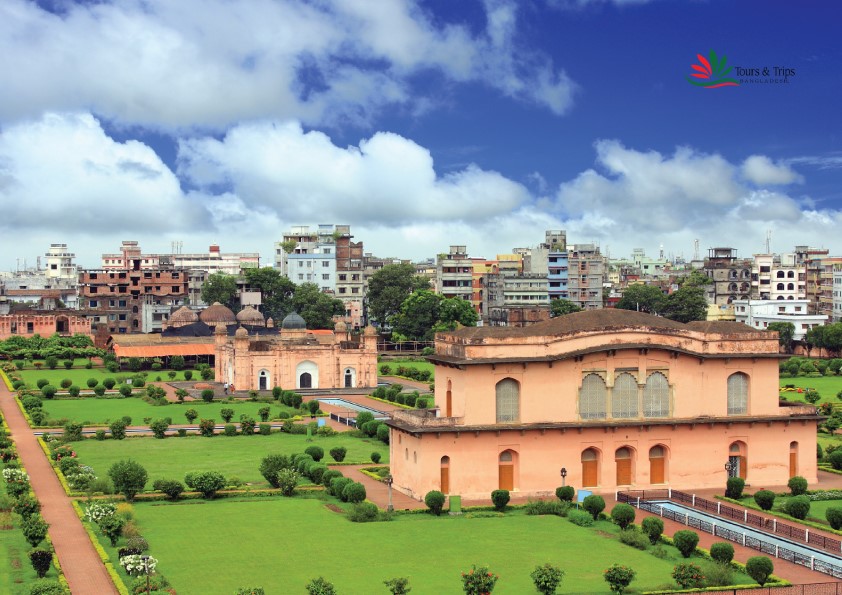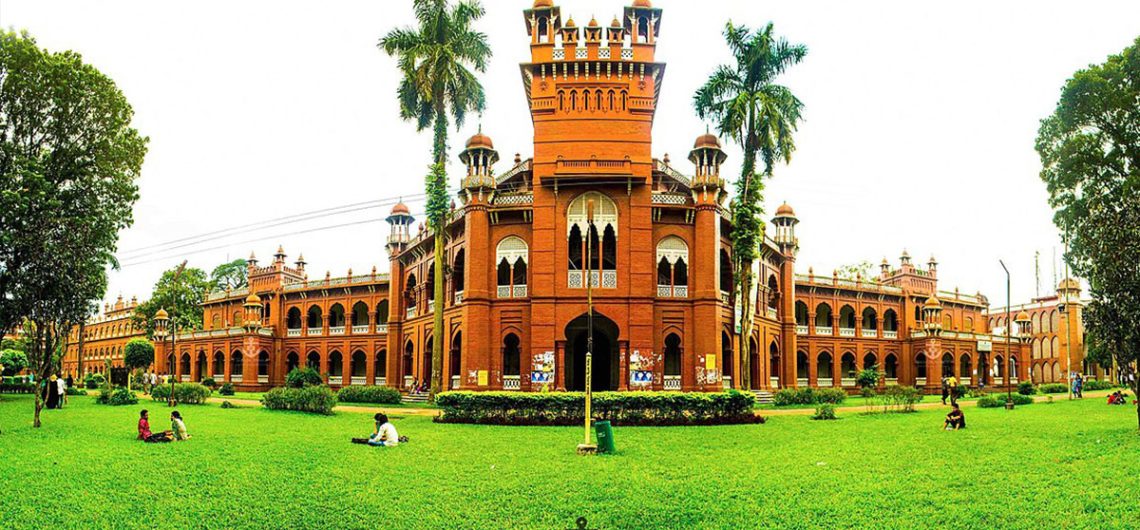
Hey there, wanderlust enthusiasts! If you’re on the lookout for your next adventure, consider the vibrant and culturally rich city of Dhaka. This bustling metropolis has a tapestry woven with historical landmarks, lively markets, and mouthwatering cuisine. Let’s dive into the heart of Dhaka Tourism attractions, promising an unforgettable journey.
The city, bursting with nearly 20 million people, is one of the most densely populated cities in a world full of activities, making it a paradise for photographers. In fact, when you find yourself in Dhaka, you’ll notice that photographic opportunities are all around, including the urban scenery, individual faces, the populace, and bustling marketplaces. You will get unlimited subjects to click on for several days. Besides photography, Dhaka has many interesting and historical sites to visit from the Mughal and colonial periods.
You will get some of the most attractive places in Dhaka for tourists, which you must visit during your Holiday in Dhaka.
If you are interested in visiting them in a day, you may check out our Things to Do in Dhaka and Daylong Tour, which are included with the Best of Dhaka Tourism and are the most attractive tourist activities to do in Dhaka. Enjoy!
Check out the most attractive tourist activities to do in Dhaka.
Attractions in Dhaka Tourism
1. Lalbagh Fort:Engaging attractions and activities for visitors on a tour of Dhaka.
The most attractive tourist activities to do in Dhaka are at Lalbagh Fort. Before, it was known as Aurangabad Fort in the Mughal period of the 17th century.
Prince Muhammad Azam, the third son of Mughal Emperor Aurangzeb, started building the fort at Aurangabad in 1678, and after one year, he handed it over to the next governor of Dhaka, Shaista Khan, to continue the construction of the fort. But he did not carry out the whole construction of the fort.
In 1684, the daughter of Shaista Khan, named Iran Dukht Pari Bibi, died there, whose tomb was inside it. He constructed magnificent obelisks inside the fort, especially near the tomb of Pari Bibi. The tomb of Pari Bibi is made of marble stones, black basalt, and glazed tiles. The Mausoleum of Pari Bibi, the two-story audience hall, and the single-story hammam are now the housing of the museum.
Outstanding among the monuments of Lalbagh Fort is a small, three-domed, elegant mosque. There are also two tombs: one of Shamshad Banu, who is the youngest daughter of Shaista Khan, and another of his grandson Khodad Khan. In the south of the Mazar complex, there are three attached graves. The middle one is Mirza Bengali. He is one of the captains of soldiers for Shaista Khan. And both side graves are an unknown child.
Numerous hidden tunnels within the fortress, now closed off, are said to exist. According to local lore, two of these subterranean routes once connected to the now-derelict Zinzzira fort located across the Buriganga River. Additionally, there was another tunnel designed like a labyrinth, intended to disorient and trap trespassers, causing them to eventually perish from hunger and lack of air.
Legend has it that during the 1857 Sepoy Mutiny against the imperial rulers, various defeated soldiers tried to flee through underground passageways but ultimately died inside. Similarly, British soldiers who pursued them to capture them also disappeared without a trace. Subsequently, British experts released dogs and even an elephant into the tunnels, but none returned, leading to the decision to seal the tunnels for good. Yet, the enigma surrounding these hidden corridors persists, with their original function still a mystery. The fort spans approximately 2000 feet in length from east to west and measures around 800 feet in width from north to south.
Visiting Hours of Lalbagh Fort:
Summer Season (April – September)
Tuesday – Saturday: 10:00 AM – 1:00 PM, 1 :30 PM – 06:00 PM
Friday — 10:00 AM – 12:30 PM, 2:30 PM – 06 :00 PM.
Sunday — Weekly holiday
Monday — 02:30 PM – 06: 00 PM
Winter Season (October – March)
Tuesday – Saturday: 9:00 AM – 1:00 PM, 1 :30 PM – 05:00 PM
Friday — 9:00 AM – 12:30 PM, 2:00 PM – 05 :00 PM.
Sunday — Weekly holiday
Monday — 01:30 PM – 05: 00 PM
Govt. Holidays
Lalbagh fort will remain close during any govt. holiday.
2. Dhakeswari Temple:Attractive tourist activities and things to do in Dhaka Tourism
Hindu temple Dhakeshwari Mandir: this temple is considered the national temple for Hindu communities. This temple was built over 12 centuries by Ballal Sen, a king of the Sena Dynasty.
Legends say that Ballal Sen dreamt several times that the deity was covered under the jungle. Ballal Sen came to the jungle to search for that place and discovered the deity was covered in the jungle. He uncovered the deity from there and built a temple. The idol of Durga is called Dhakeshwari.
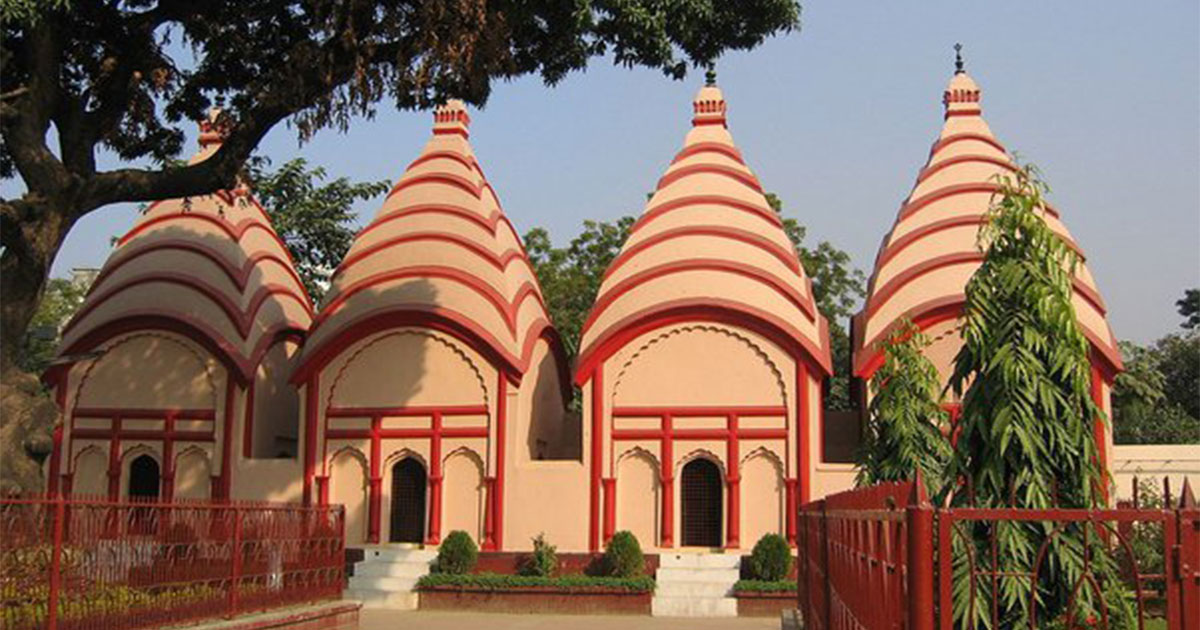
In the 16th century, Mansingh, who was the subedar of the Mughals, built this temple by laying four Shib Lingas. Dhakeswari Mandir is a complex of several temples. There are five shiv Mandirs, Kali Mandirs, and Durga, the ten-armed female deity known as Dhakeswari.
There are four shiv mandirs on the same side of the complex, standing one after another from east to west. And on the west side of the complex is another Shiv mandir. This temple has a difference from the other four mandirs; the difference is that instead of a black basal, the symbol is made of white mud. Kali Mandir is situated on the eastern side of the complex; the south side of the complex is for the puja offering and the sacrifice offering boli. This place is most attractive to pious Hindus.
3. National Parliament House:Most attractive tourist activities to do in Dhaka Tourism
Architecture Louis Khan designed the entire parliament building complex; this complex is one of the largest legislative complexes in the world. Comprising on 800,000 sq. m. of land Robert McCarter, author of Louis I. Kahn, described the National Parliament of Bangladesh as one of the most significant buildings.
Work on the building began in 1961 while Bangladesh was still part of East Pakistan. The project was interrupted by the country’s war for independence and was eventually finished in 1982. The legislative building was recognized with the prestigious Aga Khan Award for Architecture.
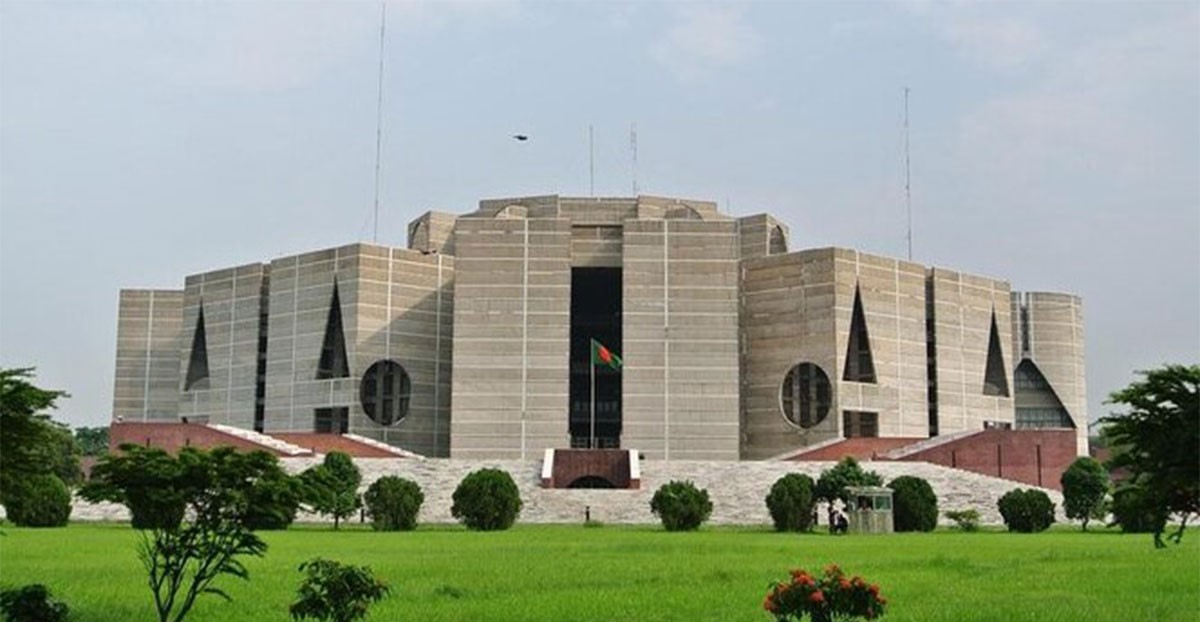
The parliament building’s exterior is notable for its simple design, featuring large walls and a spacious, geometric entrance. Inside, columns are strategically placed to allow natural light to filter in. The hollow columns not only provide support but also emit light, illuminating the surrounding areas and creating unique shapes and spaces. Complex buildings include lakes, lawns, and residences for the members of Parliament (MPs).
The main building consists of nine individuals; the eight blocks rise to a height of 110’ when the central octagonal blocks rise to a height of 155’. The Parliament building is composed of nine sections, each assigned to various functional areas that vary in height. These sections are connected in all directions by a network of walkways, staircases, atriums, elevators, and round spaces. The design of the building integrates these sections seamlessly into a single, indistinguishable whole.
This is one of the most attractive buildings in Dhaka for tourists. Tours n Trips Bangladesh will arrange all the necessary papers of permission for you to visit the Parliament building.
4. Armenian Church:Most attractive tourist activities to do in Dhaka Tourism
In the 17th century, Armenians settled in the older region of Dhaka, an area that eventually became known as Armanitola in homage to the Armenian community that resided there. By 1781, the Armenian Church was constructed along Armenian Street. An individual of Armenian descent, Agaminus Catachik, donated the property for the church’s construction. Collaborative efforts by Michel Cerkess, Aga Aminus, Merker Pogos, and Okotavata Setoor Sevorg also played a significant role in the building process of the church, which spanned over five decades before reaching completion.
On the western flank of the church, a tower housing a clock was built with the intention that its hourly tolls could be heard as far as 4 miles away, enabling people to set their timepieces in accordance with the sound of the bell from the tower. Johans Paru Piyete Sartis was the individual responsible for managing the erection of this clock tower. In 1880, the clock ceased to function, and in 1897, an earthquake razed the bell tower. The church is 750 feet long and has four doors and 27 windows.
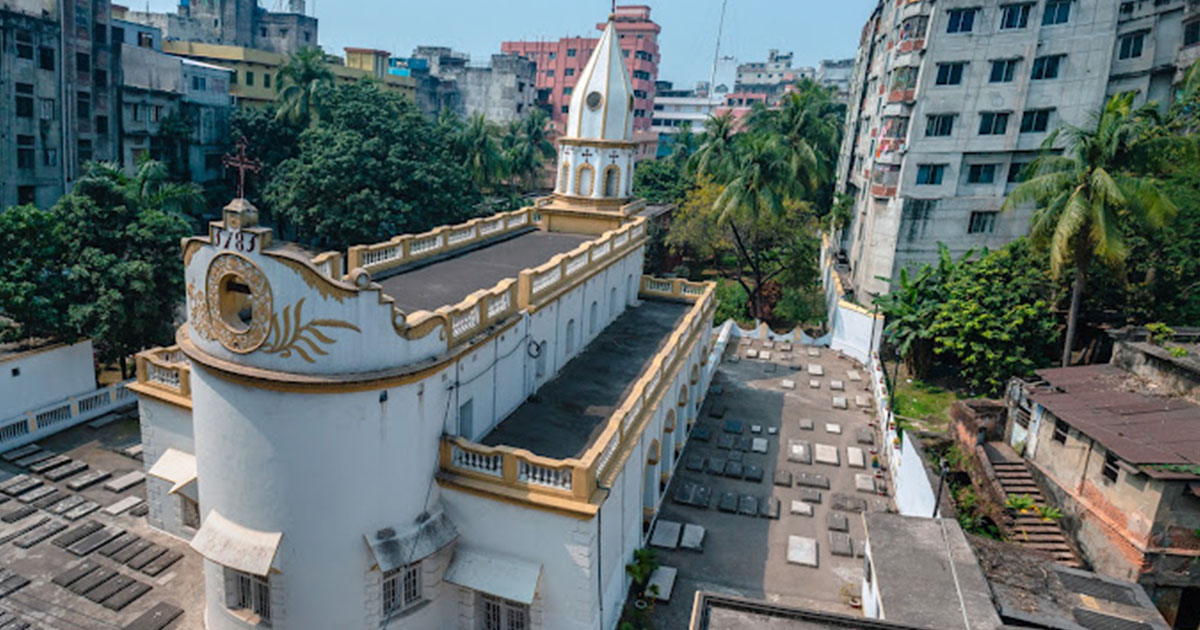
The last Armenian, Stephen, was in the church as a caretaker. It was founded in 1984, and he is worried that after his wife died, he left the church. The Armenians were Orthodox. The first private school in Dhaka is the Pogos School, established in 1848 by Armenians. Although the Armenians were very small communities,
At that time, they were rich, and they involved themselves in different businesses such as Betel Leaf Jute and clothing trades. Some of them were zamindar. Influential Armenian families are Pogos, Arutun, Sarkis, Kozsa, Michel, and Henry. In 1888, Sarkis, an Armenian, introduced the horse carriage business (horse running on four wheels) in Dhaka for the first time, which was known as a ticca car (hiring car). This place is one of the most attractive tourist attractions in Dhaka.
5. Sadarghat River Font:The Most Attractive Tourist Activities to Do in Dhaka Tourism
Dhaka is surrounded by six rivers, forming a necklace-like pattern. The Sadarghat Riverport is located along the Buriganga River in the southwest of Dhaka, and is known as the busiest and most crowded port area in the city.
This is the primary river port for water transport in many districts. The BIWTA Launch Terminal serves about 200 medium to large passenger boats that come and go from the Sadarghat terminal daily, with an estimated 30,000 people passing through each day. Visitors can witness a variety of boats at the terminal, including covered and uncovered, cargo, speed boats, tugs, and motor launches heading in various directions.

When a launch arrives at the port, the passengers—exhausted, excited, curious, worried, old, young, male, female, rural relatives, and traders—disembark from their boat and hurriedly enter the magical city.
You can climb on the roof of the large building to catch an aerial view of the terminal as well as the river and its bank. Paddle steamer service introduced during the colonial period is also operated from this river port. Paddle steamer service for passenger service is obsolete now a days in other countries. A trip by paddle steamer will enable a guest to enjoy the riverine beauty, including the countryside of Bangladesh.
Two primary thoroughfares exist, one stretching from the east to the west and another from the north to the south, which intersect at right angles close to Sadarghat, alongside a road that runs parallel to the Buriganga River. The place has been turned into a large daily market for fruits and vegetables, and there are a lot of retail and wholesale shops on both sides of the road. This place is a must-visit and one of the most attractive tourist activities to do in Dhaka.
6. Ahsan Manjil:Most attractive tourist activities to do in Dhaka Tourism
Ahsan Manjil was the residential palace of the Nawab family and the official seat of the Dhaka Nawab. This palace has now been turned into a beautiful museum. This magnificent building is situated at Kurmitola along the bank of the Buriganga River.
The building has a broad front facing the Buriganga River. On the riverside, open, spacious stairs lead right up to the second portal and their grand, triple-arched portals. There was a fountain in the garden before, in front of the stairs, which doesn’t exist now.
The palace consists of an eastern and a western section. Known as Rang Mahal, the eastern section houses, while the western section, named Andar Mahal, contains the residential quarters. The palace’s construction began in 1859 and finished in 1872, featuring the architectural style of Indo-Saracenic revival. During the Mughal period, the site included a garden estate belonging to Sheikh Enayet Ullah, who was the landowner of the Jamalpur Porgona area.He acquired a big area in Kumartoli and included it with his garden house. He collected beautiful girls from the country and abroad and kept them in his garden house for his enjoyment.
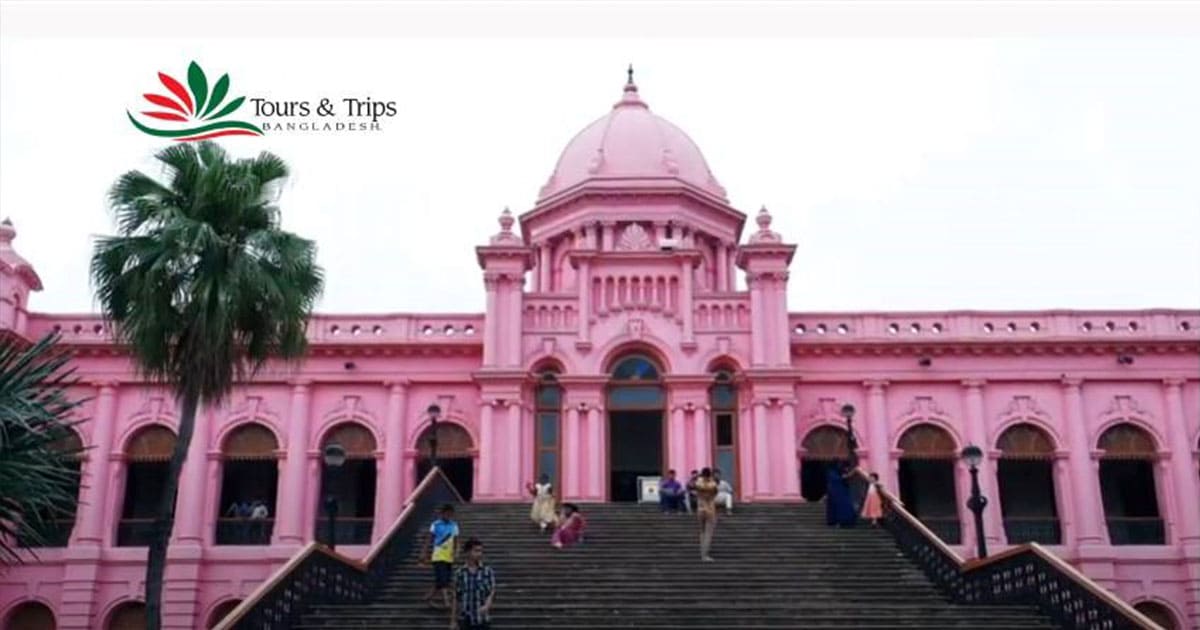
The faujdar of Dhaka (a representative of the Mughal emperor) at that time was attracted to one of the beautiful girls of that garden house. Faujdar invited Sheikh Enayet Ullah to a party one night and killed him in a plot after that girl also committed suicide in anger and sorrow. There was a grave for Sheikh Enayet Ullah in the northeast corner of the palace yard.
In the period of Nawab Alibardi Khan in the 1740s, Sheikh Moti Ullah, the son of Sheikh Enayet Ullah, sold the property to French traders. French traders could do business here without paying taxes by a decree from the emperor Aurangzeb. When the British-French war broke out in 1757, the French left the house. According to the Paris Agreement of 1814, the French claimed all their Dhaka properties in 1927.
In 1930, French traders sold the properties to Khaza Alim Ullah, a prominent landlord in Dhaka. After his death, his son Khaza Gani renovated the property and named it Ahsan Manjil after his son Ahsan Ullah. The government acquired the property in 1952 and it was placed under the supervision of the Dhaka Nawab Court in 1985. It was later acquired by the Dhaka National Museum. This palace was the first place in Dhaka to have electricity, introduced on December 5, 1901. It is now a popular tourist attraction in Dhaka.
Visiting Hours of Ahsan Manjil:
Summer Season (April – September)
Tuesday – Saturday: 10:30 AM – 5:30 PM
Friday — 3:30 PM – 07 :30 PM.
Sunday — Weekly holiday
Winter Season (October – March)
Tuesday – Saturday: 9:30 AM – 4:30 PM
Friday — 3:00 PM – 06 :00 PM.
Sunday — Weekly holiday
Govt. Holidays
Ahsan manzil will remain closed during any govt. Holiday.
7. Shakhari Bazar:The Most Attractive Tourist Activities Things to Do in Dhaka Tourism
Once upon a time, Dhaka was famous for Shakha, and the artisans were known as shakhari. Even today, the residential area of the shakhari represents the old tradition and culture of their predecessors.
Shakha means bangles from the conch shell, and the Hindu community considers it a symbol of good fortune and purity. In the 17th century, the ancestors of present-day dwellers started coming to this locality at the command of the Mughal emperor and started to settle in this area, later known as Shakhari Bazar. Both side brick buildings of some antiquity are in the narrow street of Shakhari Bazar.
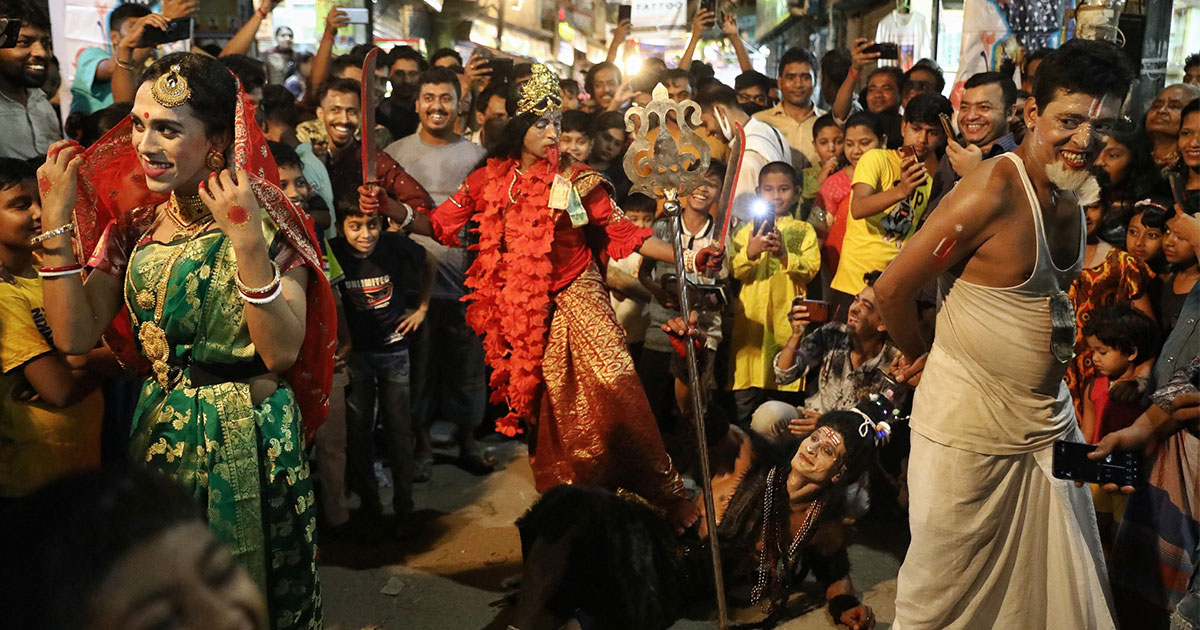
In 1666, a tourist named Tavernier came to this locality and found them there as inhabitants. Shell used to come from India and Sri Lanka, but they are not always available, and more Hindu women are unable to afford these bangles, opting to buy the much cheaper plastic look alike. For this reason, the craft faces an uncertain future, as per Hindu religion, married women wear conch shell bangles on both wrists and break them when their husbands die. Conch shells were traditionally sourced from India and Sri Lanka for making bangles. However, due to the scarcity and high cost of these shells, many Hindu women are turning to cheaper plastic alternatives. This shift in materials is jeopardizing the future of this craft, as according to Hindu customs, married women are expected to wear conch shell bangles on their wrists and break them upon the death of their husbands.
They are mostly followers of two deities: Vishnu and Krishna. Up until 1783, they did not have to pay tax for their land. In the time of the liberation war of 1971, the Pakistani army tried their best to exterminate this area, but after independence, they again started to reside in this place. This place is a must-visit tourist attraction.
8. Khan Mohammad Mridha Mosque:Attractive tourist activities and things to do in Dhaka Tourism
Khan Mohammad Mridha mosque is located in the Lalbagh area of old Dhaka. According to an inscription found, it was built by Khan Mohammad Mridha during the rule of Deputy Governor of Dhaka Farrukh Siyar.
The mosque was built under the direction of Quzi Abdullah, who served as the chief Qazi in Dhaka from 1704-1705 AD. This historic structure is currently managed by the archaeological department of Bangladesh.
The mosque is situated in the western part of the complex, which includes a garden and a graveyard. When it was first built, the mosque was a central place for the active local community.
The mosque’s architectural style is influenced by the Bengali Mughal design, with a central dome larger than the two smaller ones. It is built on a rectangular platform that is 16 feet and 6 inches high from the ground. There are vaulted rooms underneath the platform on all sides except the east.
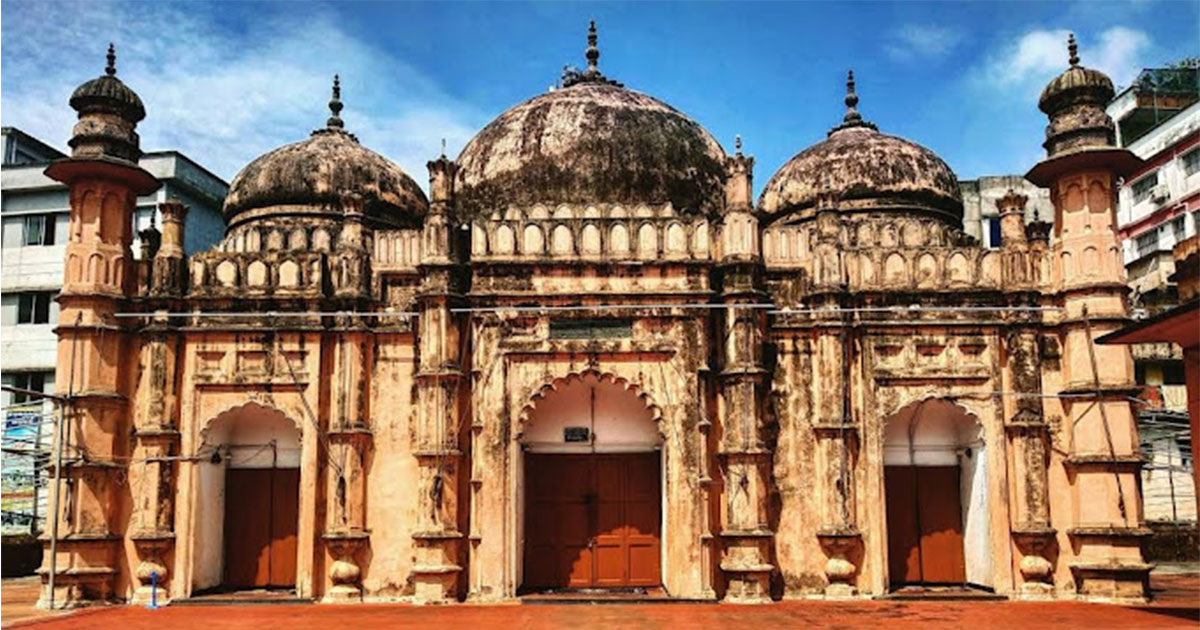
One can reach the mosque’s elevated area by ascending a staircase with 25 steps to the east, which brings you to a gateway featuring two arches. This entrance is directly in line with the mosque’s central section. The prayer hall has three gates for entrance and a rectangular structure measuring 48’x24’.
The northern part of the mosque functions as a religious school, known as a madrasa. The front of the mosque is decorated with ornate panels and detailed battlements at the top. In the northern section of the garden, there was once a well used for the ritual of Ozu, which involved cleansing before praying, but it is no longer operational. This place is one of the most attractive tourist attractions to do in Dhaka.
9. Star Mosque:The Most Attractive Tourist Activities Things to Do in Dhaka Tourism
Star Mosque is locally called Tara Masjid. It is located in Old Dhaka, in the Armanitola area. The white marble structure, superbly decorated with carved florals and star patterns, will stick to your eyes and capture attention.
Locals often stop to appreciate its enduring beauty. The mosque was built by Mirza Ghulam Pir, who is also known as Mirza Ahmed Jan, in 1711 at a time when the Mughals were in power in Dhaka. Originally, it was a three-domed mosque made from Rajmahal marble sourced from India. Part of the mosque’s original wall, which is now just covered with plaster, can still be seen behind the current structure. In 1926, a merchant from Armanitola named Ali Jan Bepari initiated the first efforts to refurbish and enhance the mosque and its surroundings.
Ali Jan brought in valuable Chinese clay tiles from Japan and England to embellish the mosque and its surroundings. Highly skilled artisans decorated the entire mosque, including the domes, with intricate patterns of flowers and stars made from China clay tiles. The glimmering stars and floral designs etched into the white marble create a magical play of light and shadow inside the mosque, reflecting sunlight in different ways.
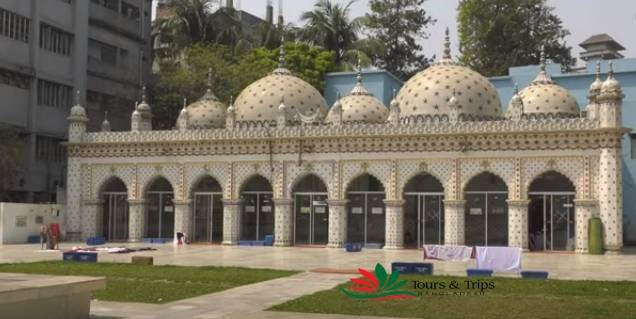
Inscriptions from the Holy Quran are also present on the inside walls. Moreover, a star-shaped water feature has been constructed to the east of the mosque within its grounds. This feature uses the same high-grade marble and substances used in the construction of the mosque.
Ali Jan Bepari and his artisans only decorated and renovated the existing structures and preserved the original structure of the mosque. In 1987, the government’s archeology department extended the prayer hall and included two more domes. The mosque got its name from innumerable star patterns. This is one of the most touristically attractive places in Dhaka.
10. Kawran Bazar:The Most Attractive Tourist Activities Things to Do in Dhaka Tourism
Kawran Bazaar is one of the largest wholesale marketplaces in Dhaka Tourism. It is also one of South Asia’s largest marketplaces. This market is named after Kawran Singh, a Marwari trader in the late 19th century.
This place is full of attractive activities and is a gem for photographers. Every day, hundreds of small temporary shops gather and are surrounded in this place for many different items for daily needs. Inside the markets, there are separate blocks for wholesale trade in fish, vegetables, spices, rice, etc.

There are also permanent shaded rows of shops that sell grocery items and toiletries. Vegetables, fish, fruits, and many other products were brought to this market primarily from the northern part of the country.
Every night, hundreds of trucks bring goods to this market. Indigenous means of transport, like the three-wheel paddle vans or push carts, carry vegetables, fish, fruit, etc. to various markets and different parts of the city. From this market, traders also export vegetables, fruits, and other agricultural goods to different countries. This market usually starts at midnight and ends at 9:00 am, but the temporary shops surround the whole day in the marketplace.
11. Bait ur Rouf Mosque:Most attractive tourist activities to do in Dhaka Tourism
Bait ur Rouf Mosque is a refuge of spirituality that utilizes simple, unadorned materials, ventilation techniques, and the play of light and shadow. The architect’s design makes this mosque a winner for the Aga Khan Awards 2014–2016.
The Bait ur Rouf mosque, located in the lively area of Faidabad in Uttar Pradesh, is a contemporary architectural masterpiece designed by Maria Tabassum. It stands as a symbol of utilizing local resources creatively and blending harmoniously with the environment through thoughtful design.
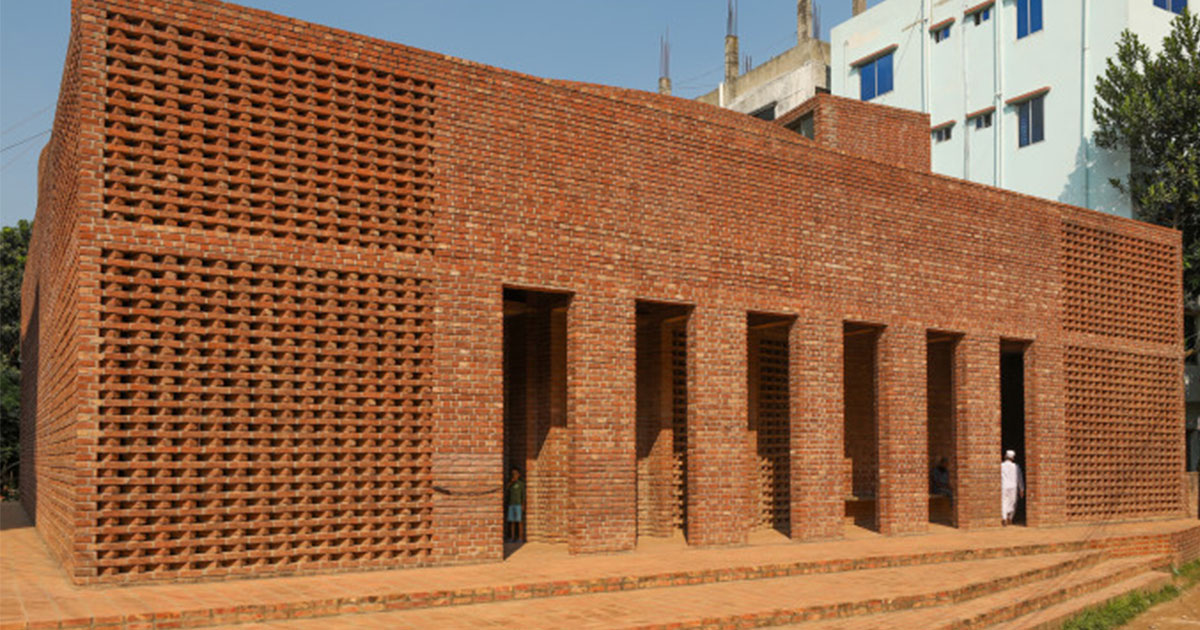
The mosque was built on a raised platform, tilted at a 13-degree angle from the usual worship direction, introducing a unique design. It incorporated both circular and square elements, enabling the prayer space to revolve and forming four large, well-lit zones surrounding it.
The atrium is held up by eight columns positioned along its edges. Activities occur within the spaces created between the square and circular sections. The lower part of the structure is constantly busy, with children playing and older men chatting and pausing for prayer. These are popular activities for visitors in Dhaka.
12. Liberation War Museum:A captivating destination offering a variety of exhibits and experiences for those exploring Dhaka.
The Liberation War Museum offers a chance to witness first-hand the Bangladesh Liberation War of 1971. Its goal is to educate young people about the country’s history, inspire them with the spirit and pride they deserve, and share the stories of the brave freedom fighters.
Within this museum, visitors can explore four captivating galleries showcasing historical relics that depict the challenges and victories of the Great Liberation War. Experience the emotions and sacrifices of that period as you witness the emergence of Bangladesh as a newly formed nation.
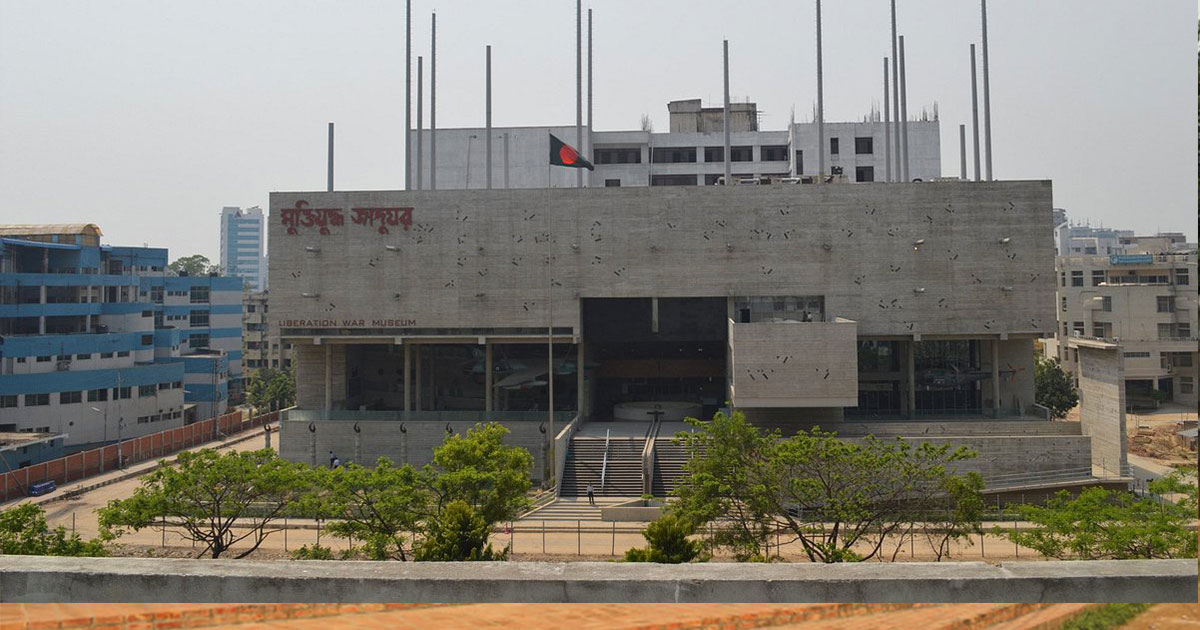 Gallery One is where visitors will start learning about the history from the pages of the ancient history of Bengal.
Gallery One is where visitors will start learning about the history from the pages of the ancient history of Bengal.
In Gallery 2 of the Liberation War Museum, visitors are greeted with Bangabandhu Sheikh Mujibur Rahman’s famous March 7 speech. The exhibit then delves into “Operation Search Light,” which marked the beginning of a brutal genocide against unarmed Bengalis by the Pakistani army, as well as Bangabandhu’s declaration of independence.
In Gallery Three, visitors can see firsthand the fight for freedom as they explore the nine-month battle of guerrilla warriors. By examining the fighters’ personal items, clothing, weapons, and hideouts, along with other artifacts, visitors can immerse themselves in the emotional experience of guerrilla warfare.
Gallery Four begins with the Bakhunda Bridge operation and highlights the role of women in the war. It showcases a particularly disturbing aspect of the conflict: the brutal torture endured by women. The display of a torture cell and photographs depict the merciless treatment inflicted by the Pakistani army on women held in their camps.
Once visitors have completed their visit to the memorial for the country’s fallen academics, they are escorted to a display showing the surrender of Lieutenant General Niazi, the leader of Pakistan’s Eastern Command, in Dhaka on December 16, 1971. Lieutenant General Jagjit Singh Aurora from India was there to witness the event.And the gallery ends with a giant display of newly-born Bangladesh.
Museum Opening Hours
The museum is open on Monday and Saturday between 10:00 a.m. and 6:00 p.m.
Sunday is closed.
In winter, it is open Monday–Saturday between 10:00 a.m. and 5:00 p.m.
13. Hatirjheel waterfront:attractive tourist activities and things to do in Dhaka Tourism
Hatirjheel waterfront is one of the recreation sites in Dhaka City. One can walk along, sit beside the lakefront, grab some fresh air, and enjoy the city, bridges, and sky.
The Hatirjheel Integrated Development Project constructed the area for easy traffic diversion through the connectivity of the city roads. City dwellers use this spot to get away from the crowded city and enjoy cycling, boating, staking, and driving around the waterfront as recreational activities.
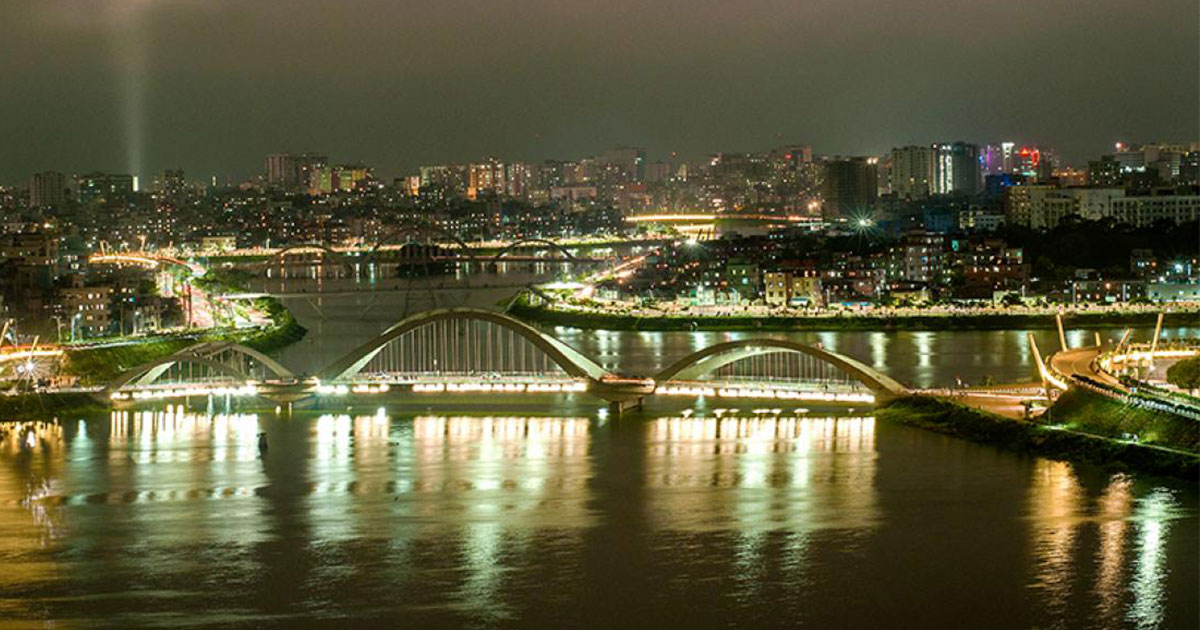 In the evening, this area looks so colorful that tourists and pedestrians visit the site to enjoy the reflection of light and fresh air. There is a 120-meter-long colorful musical fountain with a time-controlled sound wave and musical tracks. In the evening, city dwellers watch a spectacular display of water in the vicinity of the project. Hatirjheel is the most attractive place in Dhaka, which some should not miss.
In the evening, this area looks so colorful that tourists and pedestrians visit the site to enjoy the reflection of light and fresh air. There is a 120-meter-long colorful musical fountain with a time-controlled sound wave and musical tracks. In the evening, city dwellers watch a spectacular display of water in the vicinity of the project. Hatirjheel is the most attractive place in Dhaka, which some should not miss.
14.Curzon Hall:Attractive tourist activities and things to do in Dhaka Tourism
Curzon Hall was dedicated to Lord Curzon, a former British Viceroy who envisioned constructing a magnificent town hall for the city.
Construction started in 1904 on a magnificent building that combined European and Mughal architecture. The impressive domes, painted in a unique red color, were complemented by beautiful pavilions and intricate eaves.
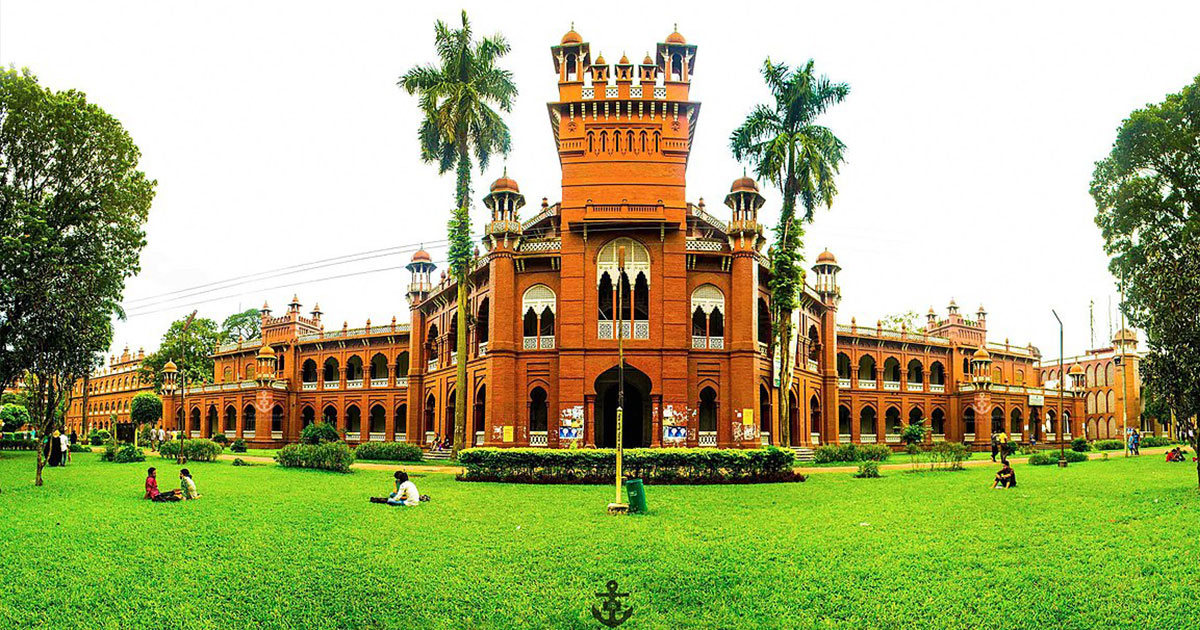
From 1948 to 1956, Curzon Hall was the location for many significant political meetings in Bangladesh. Following the division of India in 1947, Bangladesh became part of Pakistan as East Pakistan, and in 1948, the Constituent Assembly of Pakistan designated Urdu as the official language for East Pakistan.
Students from the University of Dhaka swiftly gathered to demonstrate at the Constituent Assembly grounds, expressing their discontent with the official language policy that favored Urdu over Bangla, the most widely spoken language. The protest took place at Curzon Hall, a famous tourist attraction in Dhaka, where they publicly opposed the language policy.


